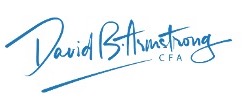If you’ve found yourself wondering, “Am I supposed to be looking at these alternative investments everyone keeps talking about?” — you’re not alone.
There’s a wave of new pitches hitting inboxes and voicemails from fund managers selling private equity, hedge funds, venture capital, private credit… and they all sound compelling.
But here’s what concerns me most: the timing.
When the big institutions — pensions, endowments, foundations — start backing away from alternatives, the sales pitch doesn’t stop. It just shifts to a new target: individual investors. And the messaging gets emotional, not rational. “Look at the returns! Smart money is doing this! Don’t miss out!”
Sound familiar?
Here’s the question I think matters more: If these deals are as attractive as they claim, why aren’t institutions still buying?
Even Yale — one of the earliest adopters of private equity — recently announced it was selling off a major portion of its private equity holdings.
As New York University Stern School of Business finance professor, Aswath Damodaran, puts it: “Perhaps the most telling sign that the heyday of alternative investing might have crested was Yale’s move.” (Watch the video)
Translation: When the professionals start stepping back, and the pitch starts landing in your inbox, it’s worth pausing to ask who these deals are really designed to benefit.
And the answer? The fund managers and issuers win, no matter how the investment performs.
Let’s get clear on what we mean by “alternatives.”
According to Damodaran, alternatives include anything beyond traditional stocks, bonds, and cash. That includes hedge funds, private equity, venture capital, private credit, real estate, cryptocurrencies, and even collectibles.
The sales pitch usually rests on two ideas:
1. Diversification: “These investments behave differently than the market, so they reduce risk.”
In theory, yes. In practice? Not so much. When markets are calm, alternatives appear uncorrelated. But when real volatility hits (think 2008, 2020, 2022, or 2025), many of these investments fall right alongside everything else.
Why? Because they aren’t priced daily like public stocks. They use models and lagging estimates that make them look more stable than they actually are. When stress hits, their true volatility shows up—and they’re hard to sell quickly if you need cash.
2. Alpha: “Skilled managers can find inefficiencies and outperform.”
Alpha sounds exciting. But I’ll be blunt—what used to work just doesn’t anymore. I’ve looked under a lot of these rocks. What I find is often more marketing than merit.
(Read the June 2025 blog post)
Then there are the fees.
Despite some pressure, many alternative funds still charge close to “2 and 20”: 1–2% of assets annually, plus 15–20% of profits. That’s a huge hurdle to clear. Consider how carefully most investors evaluate ETF fees in tenths of a percent. Now compare that to alternative fees.
Combine high fees, low transparency, and illiquidity, and the picture becomes clear: this isn’t just about returns. It’s about risk, flexibility, and clarity — all of which are essential to your ability to act with intention.
So what do I recommend instead?
I’ve seen these pitches flood in—and I get the appeal. But what I believe (and what Monument is built on) is this: smart, simple portfolios grounded in liquidity, cost-efficiency, and transparency. With the right plan and a well-funded cash cushion, you don’t need to chase complexity to ride out volatility.
Cash is undervalued. It’s transparent, liquid, and right now, it earns around 4%. Even if rates drop, cash remains a flexible and efficient buffer.
(Listen to our podcast on this topic)
Damodaran flags four major risks when it comes to alternatives:
- Disappointing performance
- Lack of transparency
- Illiquidity at the wrong time
- Excessive complexity
If you’ve followed our thinking over the years, you know these are the exact issues we help clients avoid.
Because at Monument, your financial strategy should support your life — not distract from it. We believe that clarity, liquidity, and flexibility aren’t just preferences, they’re prerequisites.
Volatility is part of investing. What matters is whether you’re forced to sell at the wrong time.
We help clients forecast cash needs and keep smart reserves, so they can leave their growth assets alone when markets dip. That’s how you build confidence and freedom into your financial life.
The takeaway?
You don’t need to mimic an Ivy League endowment. You need a plan that fits your life, your goals, and your timeline.
A purposeful portfolio, built with intention and managed with discipline, is more valuable than any performance pitch.
Keep looking forward.


